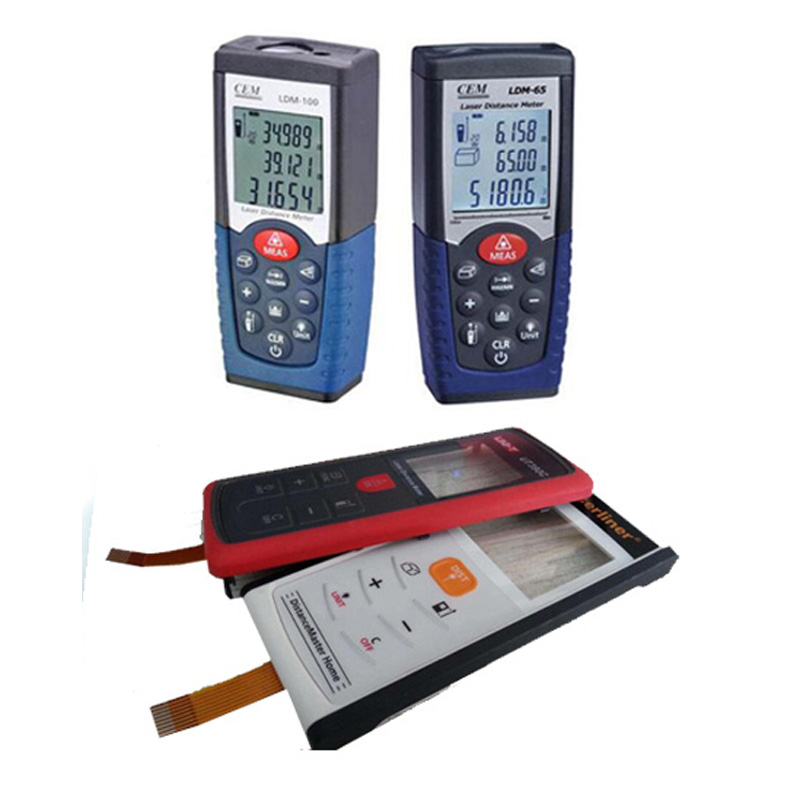Everything About Membrane Switch Over: A Comprehensive Guide for Beginners
Membrane buttons are vital components in contemporary electronics, using a special interface for individual interaction - membrane switch. Their split construction, consisting of overlays and conductive traces, offers capability and toughness. Unlike conventional mechanical buttons, membrane buttons present a smooth design and adjustable options. Comprehending their key functions and advantages can transform item design. The details of their application and style factors to consider require more exploration.
What Is a Membrane Switch over?
A membrane layer switch is a kind of electric switch that includes a versatile membrane layer layered over a printed circuit card. This style permits a sleek and small interface, commonly utilized in different digital tools. Membrane switches are typically discovered in customer devices, clinical equipment, and industrial machinery because of their longevity and resistance to ecological factors.The construction generally includes multiple layers, such as graphic overlays and sticky backing, which supply responsive responses and shield the wiring below. The operation of a membrane switch is initiated when pressure is related to the surface, completing an electrical circuit.These switches are valued for their versatility, enabling customized designs and printed graphics that accommodate particular interface. Their low-profile nature decreases area demands, making them suitable for applications where standard switches may not fit. In general, membrane layer switches use a useful and visual solution for modern-day digital gadgets.
Key Components of Membrane Layer Changes
Membrane switches consist of numerous essential components that add to their capability and efficiency. The top layer, called the overlay, supplies the interface and is frequently printed with graphics or icons. Under the overlay exists a spacer layer, which separates the conductive components and stops inadvertent activation. The following crucial component is the visuals layer, which improves looks and ensures the durability of the design.Conductive traces, commonly made from products like silver or carbon, are published on the circuit layer. When pressure is put on the overlay, these traces enter into contact, completing the circuit. In addition, a support layer offers architectural support and can be made from products such as polyester or polycarbonate. Together, these elements develop a trustworthy, easy to use user interface suitable for numerous applications, from household home appliances to industrial devices. Recognizing these elements is crucial for anybody curious about membrane switch modern technology.
How Membrane Layer Switches Over Work
Comprehending just how membrane switches function is essential for appreciating their extensive usage in different gadgets. A membrane button operates via a series of layers, including a visuals overlay, spacer, and a circuit layer. When pressure is used to the overlay, it presses the spacer layer, enabling the circuit layer to make call and complete an electrical circuit. This action sends out a signal to the tool, prompting a reaction, such as switching on a light or turning on a function.Membrane switches over can be designed with various functions, consisting of responsive responses, backlighting, and personalized graphics, enhancing user interaction. Their building permits a covered layout, safeguarding the internal elements from dust, wetness, and pollutants. This longevity makes them suitable for varied applications, from customer electronic devices to commercial tools. Overall, the simplicity and effectiveness of membrane switches over add to their appeal in modern-day innovation.
Advantages of Membrane Switches Over Mechanical Switches
While mechanical buttons have actually long been a staple in several tools, membrane layer changes offer distinct advantages that make them increasingly appealing. One substantial advantage is their slim account, permitting for more portable layouts and higher versatility in product growth. In addition, membrane layer switches feature a consistent surface area, which enhances visual allure and simplifies cleaning, making them ideal for atmospheres where hygiene is critical.Another benefit is their resistance to dirt and wetness. Unlike mechanical switches, which can be compromised by ecological elements, membrane buttons supply a sealed user interface that secures against impurities - membrane switch. Additionally, membrane buttons normally have a longer lifespan as a result of fewer moving components, leading to boosted toughness and reliability.Cost-effectiveness is likewise a remarkable advantage, as membrane layer buttons can be created wholesale with reduced manufacturing prices. These factors integrate to place membrane switches as a sensible alternative to standard mechanical options in different applications
Usual Applications of Membrane Changes
Membrane layer buttons are extensively used in various fields, especially in customer electronic devices and industrial control panels. In customer tools, they provide a smooth, easy to use interface, while in industrial setups, they boost resilience and performance. Recognizing these applications highlights the versatility and functionality of membrane buttons in modern technology.
Consumer Electronics Tools
As customer electronic devices remain to advance, membrane layer buttons have actually become a popular choice for a variety of devices due to their flexibility and smooth style. These switches are typically found in smart devices, tablet computers, and remotes, where room is minimal and visual appeals matter. Their low profile and customizable designs permit suppliers to develop easy to use user interfaces that improve the overall user experience. In addition, membrane layer buttons are commonly utilized in home appliances such as microwaves and coffee machine, providing intuitive control alternatives while standing great post to read up to wetness and dirt. The resilience and reliability of membrane layer changes make them suitable for day-to-day customer products, making certain durability and consistent efficiency. Generally, their combination in customer electronic devices reflects a mix of performance and modern layout.
Industrial Control Panels
The applications of membrane switches over prolong beyond customer electronics, locating significant usage in industrial control board. These switches are preferred for their toughness and resistance to severe environments, making them suitable for manufacturing and procedure control settings. They supply a reputable user interface for operators to regulate machinery, display processes, and imp source change setups. Membrane buttons can be customized to match particular functional needs, integrating functions like backlighting and responsive feedback, improving customer experience. Their low-profile style permits for integration right into various equipment, while their capacity to withstand spills, dust, and severe temperature levels guarantees durability. On the whole, membrane switches add to risk-free and effective procedure in industrial applications, demonstrating their adaptability and performance sought after atmospheres.
Factors To Consider for Creating Membrane Layer Switches
When developing membrane layer switches, picking the best products is vital to ensure toughness and capability. Additionally, understanding layer setup strategies can greatly affect the switch's performance and user experience. These considerations play an essential role in creating trustworthy and reliable membrane layer button styles.
Material Selection Significance
Material selection plays an important role in the design and functionality of membrane layer buttons. The picked materials directly affect the button's longevity, responsive action, and general aesthetic. Key considerations consist of the substratum, which should give architectural stability while permitting flexibility, and the graphic overlay, which requires to be resistant to wear and ecological variables. Conductive products ought to assure trusted electric performance, while adhesives must supply solid bonding without jeopardizing the switch's procedure. Furthermore, compatibility with manufacturing procedures and end-user atmospheres is vital; products should withstand differing temperatures, moisture levels, and chemical direct exposure. Inevitably, suitable product choice not only boosts the membrane button's performance yet likewise adds to its durability and user contentment, making it an important aspect of the layout process.

Layer Arrangement Techniques

Often Asked Inquiries
For How Long Do Membrane Layer Changes Generally Last?
Membrane layer switches generally have a life-span of 1 to 5 million cycles, depending on usage and ecological conditions. Elements such as layout quality and operating frequency substantially influence their toughness and total performance durability.

Can Membrane Layer Changes Be Personalized for Specific Layouts?
Membrane layer switches can indeed be tailored to suit certain designs, permitting for varied shapes, shades, and capabilities. This adaptability enables manufacturers to customize these switches to fulfill special aesthetic and functional demands efficiently.
What Products Are Utilized in Membrane Change Construction?
Membrane layer switches are commonly created utilizing products such as polyester, polycarbonate, and adhesive layers. These products give resistance, adaptability, and resilience to ecological variables, ensuring the switches work properly in various applications and conditions.
Are Membrane Changes Water-proof or Resistant to Wetness?
Membrane layer buttons can be designed to be moisture-resistant, utilizing specialized products and layers. However, their waterproof capabilities depend upon building high quality and certain applications, making it vital to analyze needs for perfect performance in different atmospheres.
Exactly How Are Membrane Switches Fixed if Harmed?
Fixing damaged membrane switches over commonly entails changing the impacted layer or circuit. Service technicians might likewise apply conductive glue or make use of specialized repair service sets, guaranteeing functionality is restored without full replacement of the entire button assembly. Unlike traditional mechanical buttons, membrane layer switches offer a streamlined style and customizable alternatives. A membrane switch is a kind of electrical button that is composed of a versatile membrane layered over a published circuit board. The operation of a membrane button is initiated when stress is applied to the surface area, completing an electrical circuit.These buttons are valued for their flexibility, making it possible for custom-made designs and published graphics that cater to details individual interfaces. While mechanical buttons have long been a staple in several gadgets, membrane layer changes deal unique benefits that make them progressively appealing. Membrane layer switches commonly have a longer life expectancy due to less moving components, resulting in enhanced toughness and reliability.Cost-effectiveness is also a remarkable benefit, as membrane layer buttons can be created in bulk with reduced production costs.
Comments on “Exploring membrane switch applications in extreme environments”